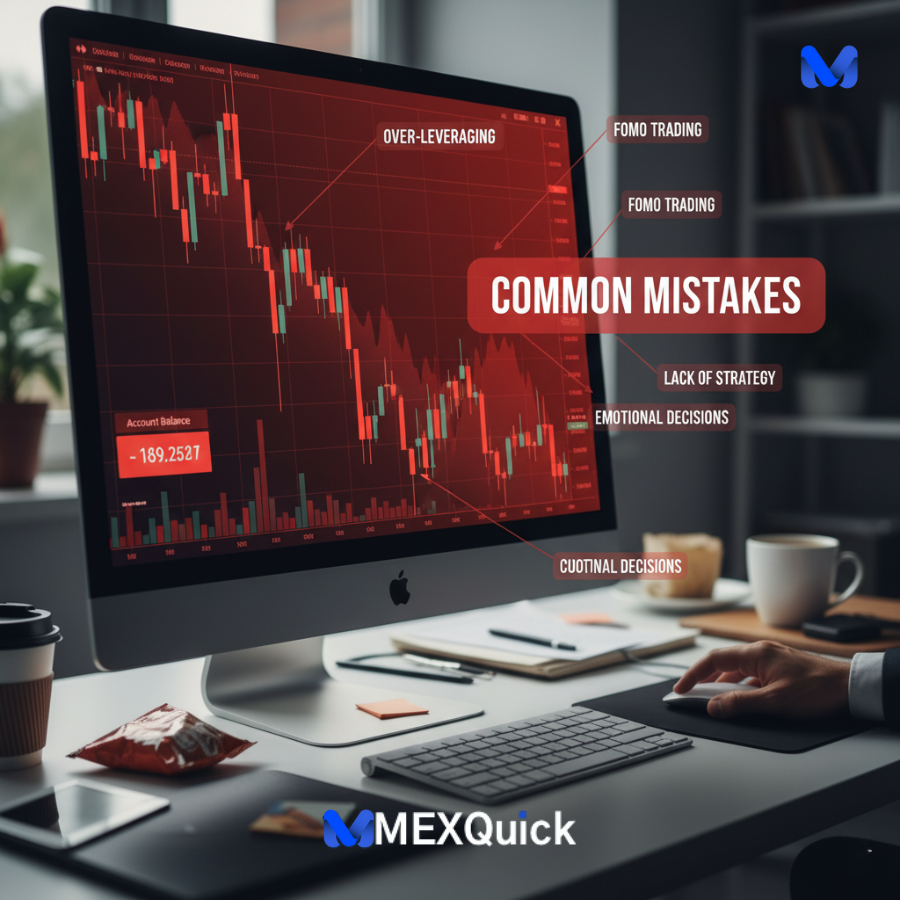I lost $2,000 in my first month of trading. It wasn’t because the market was against me. It was because I made every single one of the common trading mistakes I’m about to show you. I traded on emotion, I chased hot tips, and I risked way too much on each trade. That $2,000 wasn’t a market loss; it was a tuition fee.
The harsh truth is that most new traders lose money not because they’re unlucky, but because they repeat the same preventable errors. The path to profitability is less about finding a secret strategy and more about avoiding these beginner trading errors.
This guide is your cheat sheet. I’m going to walk you through the most costly trading mistakes I’ve seen—and made—so you can sidestep them. By learning these online trading tips and understanding how to avoid online trading pitfalls, you’ll protect your capital and build a foundation for long-term success. Let’s turn your losses into lessons.
The Psychological Pitfalls: How Emotions Derail Traders
The biggest trading mistakes aren’t technical; they’re psychological. Your brain is your greatest asset and your worst enemy when money is on the line.
Chasing Losses (The Revenge Trade)
This is perhaps the most dangerous of all beginner trading errors. After a loss, the urge to “win it back” immediately is overwhelming. This leads to revenge trading—entering impulsive, poorly thought-out trades to recoup losses.
-
The Result: Instead of one small, managed loss, you often create a much larger one. It’s a quick path to a blown-up account.
-
Online Trading Tip: After a loss, walk away. Close the platform. The market will still be there tomorrow. Trading should never be an emotional reaction.
FOMO (Fear Of Missing Out)
You see a stock rocketing upward, and you panic-buy at the peak, terrified of missing the rally. This is FOMO. By the time a move is obvious enough to trigger this fear, the smart money has often already taken its profit.
-
The Result: You become the “bag holder,” buying at the top just before a pullback.
-
How to Avoid This Pitfall: Have a plan for every trade. If a setup doesn’t meet your predefined entry criteria, no matter how exciting it looks, you let it go. There will always be another opportunity.
Strategic Errors: Flaws in Planning and Execution

Even with the right mindset, poor strategy leads to consistent losses. These are common trading mistakes related to your approach.
Trading Without a Plan
Jumping into the markets without a written trading plan is like sailing a stormy sea without a map. A trading plan is your rulebook. It defines:
-
Your entry and exit criteria.
-
Your risk management rules (e.g., never risk more than 1-2% of your account per trade).
-
The markets you will trade.
-
The Consequence: Without a plan, every decision is emotional, leading to inconsistent results and inevitable failure.
Ignoring Risk Management
This is the ultimate pitfall. Many beginners focus only on potential profits while ignoring potential losses. Proper risk management is what keeps you in the game long enough to succeed.
-
The Critical Mistake: Risking 10%, 20%, or even 50% of your account on a single “sure thing” trade.
-
The Statistic: A study of retail traders often shows that a lack of stop-loss orders is a primary contributor to catastrophic losses. A stop-loss is not a suggestion; it’s a mandatory insurance policy.
Overtrading
More trades do not equal more profit. Overtrading is often driven by boredom or the mistaken belief that you need to be constantly active. This leads to taking low-quality setups that aren’t part of your plan.
-
The Outcome: You incur more transaction costs and dilute your potential profits with mediocre trades. Quality over quantity is a golden rule.
Knowledge Gaps: Mistakes Born from Inexperience
Some trading mistakes are simply due to a lack of knowledge. The market is a harsh teacher for these lessons.
Falling for “Sure Thing” Tips
Whether it’s a hot tip from a social media “guru” or a forum post, acting on unverified information is a recipe for disaster. If it sounds too good to be true, it almost always is.
-
The Reality: By the time a tip reaches the masses, the opportunity is usually gone. Do your own research (DYOR) is not just a slogan; it’s a survival skill.
Not Using a Demo Account First
Many beginners are so eager to start that they skip the practice phase. A demo account is a risk-free trading simulator that allows you to make beginner trading errors with virtual money.
-
The Pitfall: Using real money to learn the basics is an expensive choice. The core mechanics of placing orders and managing risk should be mastered in a simulated environment.
A Practical Plan to Avoid These Pitfalls

Knowing the mistakes is one thing; avoiding them is another. Here is a simple, actionable plan.
-
Create a Detailed Trading Plan: Write it down. This is your business plan for trading. It must include your risk management rules.
-
Practice with a Demo Account: Spend at least one month trading in a simulator. Prove to yourself that you can be consistent without real money on the line.
-
Start Small: When you go live, trade with a tiny amount of capital. The goal of your first 50 trades is not to get rich; it is to execute your plan perfectly.
-
Keep a Trading Journal: Record every trade—the reason for entry, the exit, the outcome, and, most importantly, your emotional state. Review it weekly to spot your personal trading mistakes.
Conclusion: Trade Smarter, Not Harder
The common online trading mistakes we’ve covered—emotional trading, lack of a plan, poor risk management, and knowledge gaps—are responsible for the majority of beginner losses. The good news is that they are all within your control to fix.
Success in trading is not about being right all the time. It’s about managing risk so that your winners are larger than your losers, and staying in the game long enough for your edge to play out. By focusing on avoiding these online trading pitfalls, you shift from being a gambler to being a strategic businessperson.
Your Action Plan to Start Today:
-
Audit Your Last 10 Trades. Were any driven by FOMO or revenge? Be honest.
-
If You Don’t Have a Written Plan, Stop Trading Now. Create one before you place another trade.
-
Set a Hard Rule: Never risk more than 2% of your account on a single trade.
The goal is to be the trader who learns from others’ mistakes, not the one who serves as the lesson for others.
I’d love to hear from you. Which of these trading mistakes resonates most with your experience? What’s the hardest pitfall for you to avoid? Share your biggest challenge in the comments below—let’s learn from each other. If this guide helped you, pay it forward and share it with a fellow trader.

